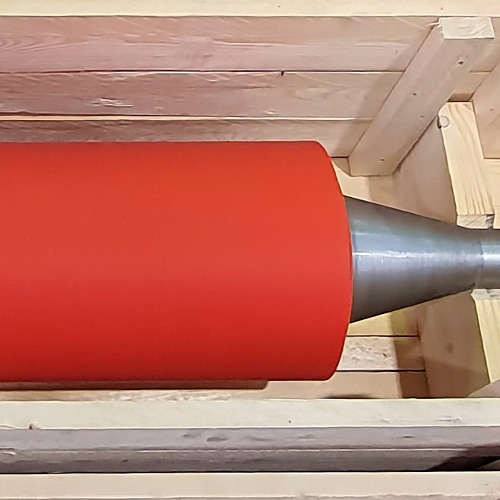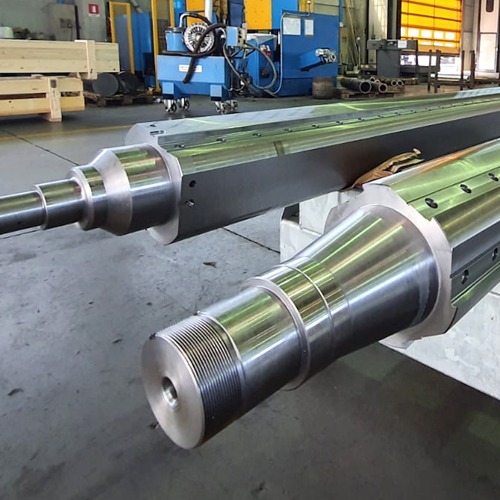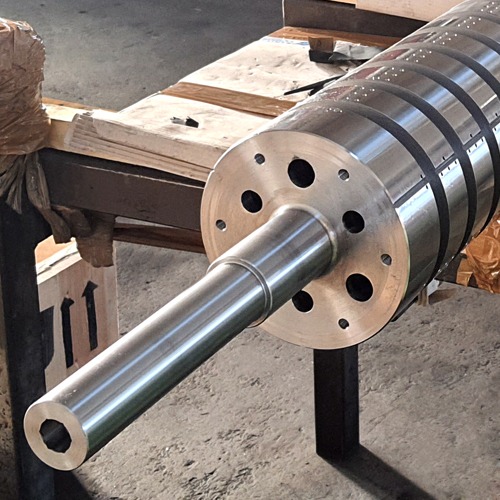Rolls for tissue

Rubber covered rollers
Rubber covered rollers have several functions in tissue processing machines including: towing, conveying, pressure on the treated material and more.
The surface, which is the area of contact with the treated product, can be coated with different materials including: silicone, hypalon, polyurethane, neoprene, EPDM, viton.

Embossing rollers
The embossing rollers have the purpose of bringing back an engraving on the product. They do this thanks to raised areas on the surface and to the pressure exerted on the product thanks to the counter-thrust of the rubber-covered roller. This phase of tissue treatment is necessary to give precise characteristics to the product according to the final use.
The surface, which is the area of contact with the product, must be hard and resistant over time, for this reason surface hardening or galvanic coatings such as chrome plating are carried out externally.

Rotating and fixed punching rollers
The punching rollers have the function of engraving the product by carrying out a real through hole with the final purpose of allowing an easy "tearing" of the product in the desired area. The punching area consists of two rollers between which the product passes. One of the two rollers is rotating and one is fixed.
Both rollers are characterized by milling, drilling and tapping on the surface, which allow the drilling parts to be fixed to the roller. The rotating roller presents the workings on the spiral surface, this to allow the linearity of the engraving on the product.
The surface, which is the area of contact with the product, can be maintained by a grinding finishing or coated. The possible coatings are: light polish chrome plating, light satin chrome plating, thick chrome plating and grinding, non-stick coatings.
Rubber covered rollers
Embossing rollers
Rotating and fixed punching rollers
Rolls for crease creation
Cutting rollers

Rolls for crease creation
The rollers for creating the crease are used on machines dedicated to folded tissue and have the particular characteristic of having to create a vacuum between the roll table and the product.
This is made possible thanks to axial holes present along the entire length of the roller and to holes perpendicular to the roller that join the axial ones, so as to allow the creation of a surface depression.
The surface, which is the area of contact with the product, can be maintained by a grinding finishing or coated. The possible coatings are: light polish chrome plating, light satin chrome plating, thick chrome plating and grinding, non-stick coatings.

